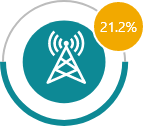BACKGROUND
According to the WHO Global TB report 2021, around 115000 new TB cases emerged in Mozambique, at an incidence rate of 368 for every 100,000 people, and 32,000 people are estimated to suffer from both TB and HIV. [1]
With 1,223 individuals in the country developing MDR/RR TB annually, and another 66 confirmed for XDR-TB, Mozambique is also a DR-TB high burden country. [1]
Overall, Mozambique falls in all the 3 lists of 30 High Burden countries, i.e., high TB, DR-TB and TB/HIV case loads. [2]
In line with WHO’s End TB strategy, Mozambique has achieved a treatment coverage of 84% of all people living with TB in 2020 and the TB case fatality rate stands at 11%. [1]
Affected by the COVID19 pandemic, country’s TB case notification dropped in the second quarter of 2020, however, in the next months, the health system has made efforts to revive its TB surveillance practices and the notification has steadily improved to reach above the monthly notification average figures from 2019.
Vision and priorities of Mozambique’s National TB Program (NTP) is crucial to the technology innovations in electronic case-based TB system’s functioning. The NTP has developed an outline and concept note for the new National Strategic Plan (NSP) for TB 2020-2029.
The structure largely mirrors the WHO’s End TB strategy, with an emphasis on patient-centered prevention and care, bold policies and strong systems, and enhanced innovation and research. [3]
Since 2016, Mozambique uses DHIS2 as the platform for TB notification (SIS-MA) , and currently, all the data is captured in aggregate form from all facilities across the country. At the same time, the importance of implementing a case-based system was realized and the NTP introduced a case-based TB notification pilot in 100 facilities of 3 provinces in 2021. The aggregated data reporting continues from all facilities (including pilot sites).
It is empirical that technology penetration plays a vital role in enabling the evolution of information systems from paper to digital solutions. As per 2021 figures, 50.4% of the population has a cell phone, and nearly 34.2% use smartphones. Internet penetration stands at 21.2% in the country. Enhancing digital inclusion in Mozambique is essential, given that access to reliable and affordable connectivity is a foundational step in maximizing the impact of deploying digital technologies on the government’s development aspirations. [4]
Apart from implementing the DHIS2 platform, the country is also leveraging other digital innovations as pilots to improve data collection and use, as given below:
Infomovel (Commcare) is one such patient tracking tool developed to support community health workers (CHWs) administer services; focused on HIV/AIDS, tuberculosis, and prevention of mother-to-child transmission (PMTCT). The system has been expanded to national scale in 2019 and supports linkages between community workers and health facility focal points by including case management support. [5]
Based on the multi-stakeholder discussions, interviews and independent research, and guidance from the National TB Program, this assessment report is an attempt to describe the current capacity and identified gaps/ challenges in the digital ecosystem of TB surveillance. The report shares strategic recommendations for developing a comprehensive case-based surveillance system in the country while leveraging the existing infrastructure, in-house capacity, and assets.

STATUS OF CASE BASED TB NOTIFICATION
In 2016, Mozambique adopted SIS-MA (DHIS2) as the national system for reporting of TB notification data. Manual registers are maintained at the health facilities for capturing all TB specific data and the data is then digitized by entering in SIS-MA on a monthly basis.
In 2020, the country has also implemented a pilot for case-based reporting in 3 provinces, however the aggregate reporting continues in parallel.
This system has an integrated dashboard that aggregates data, and automatic reports are generated for analysis. Based on role and access of a user in SIS-MA, the data is filtered to only show relevant figures.
The national TB notification system allows management of both DR-TB and DS-TB cases.
In 2011, Mozambique piloted the GeneXpert machines and its diagnostic connectivity solution, GxAlerts was introduced in 2014. Expansion of the GeneXpert network has been coupled with the expansion of GxAlerts to full national scale, capturing 90% of all GeneXpert test results. This has significantly improved the timely dissemination of diagnostic results to the clinicians and timely initiation of treatment for Drug Resistant TB cases, which has increased to over 85% by the end of 2020.
In the last 6 years of its implementation, SIS-MA (DHIS2 aggregate) has successfully got established as the national TB surveillance system and is now receiving data from all facilities across the country. With help from WHO HQ and University of Oslo, the country has adopted the standard DHIS2 tracker and dashboard templates, and the related training and pilot implementation with android-based data entry is in process.

ELECTRONIC TB NOTIFICATION DATA COLLECTION AND USE
| TARGET | CURRENT SCALE | COLLECTION TOOLS | DATA TYPE | DATA USAGE | |||
|---|---|---|---|---|---|---|---|

National Level
|
Data Not Collected at this level
|
DHIS2 Dashboard | |||||

Provincial
level
|
11 | Data Not Collected at this level | DHIS2 Dashboard | ||||

District Level
|
161 | 161 (for facilities with hardware/ connectivity issues | DHIS2 | Aggregate | DHIS2 dashboard | ||

Facility level
|
675 | DHIS2 675 – Aggregate, 100 – Tracker | DHIS2 | Aggregate, Case based (pilot sites) | DHIS2 Dashboard | ||

Community Level
|
Data not collected at this level | Data not used at this level | |||||

CASCADE OF CARE MONITORING
PRESUMPTIVE SCREENING
TB Testing
Treatment Initiation
Treatment Monitoring
Treatment Outcome
Contact Tracing






| KEY DATA VARIABLES | Yes/No |
|---|---|
| Demographic details (Age, DOB, Gender) |
|
| Address and contact details (Country, Division, District, House address) |
|
| Geolocation (GPS coordinates of the household) |
|
| Contact details (Phone number/Mobile number, WhatsApp, Email etc.) |
|
| Health Facility address |
|
| Type of health facility (Public, Private etc.) | |
| Site of TB (Pulmonary, Extra-pulmonary) |
|
| Type of diagnostic test (Microscopy, GeneXpert, TruNaat, CXR, etc.) |
|
| Date of test result |
|
| Drug susceptibility (DSTB, DRTB) |
|
| Treatment Regimen |
|
| Treatment start and end date |
|
| Co-morbidity (HIV, Diabetes, COVID-19 etc.) |
|
| Treatment monitoring/adherence |
|
| Treatment outcomes |
|
| KEY INDICATORS | Yes/No |
|---|---|
| Presumptive screening (proportion) | |
| Treatment initiation (proportion) |
|
| Treatment monitoring/adherence | |
| Treatment outcome (proportion) |
|
| Spatial distribution of TB notification |
|
| Age-group & sex wise aggregate numbers and proportions notified |
|
| Basis of diagnosis wise aggregate numbers and proportions notified |
|
| Type/site/drug resistance wise aggregate numbers and proportions notified |
|
| Provider source-wise aggregate numbers and proportions notified |
|
| Comorbidity wise aggregate numbers and proportions notified |
|
| Key-population wise aggregate numbers and proportions notified |
|
| Estimate/Target wise notification/treatment coverage (proportions) |
|
| Provider-type disaggregated treatment outcomes (proportions) |
|
| Comorbidity disaggregated treatment outcomes (proportions) |
|
| Key population disaggregated treatment outcomes (proportions) |
|
 Digital
(aggregated)
Digital
(aggregated)
STATUS OF ELECTRONIC CASE BASED TB SURVEILLANCE
Electronic System For Case Based TB Notification

Only aggregate data entry in DHIS2 (Case based data entry pilot running in 3 provinces)
Lowest Unit For TB Notification Digitisation
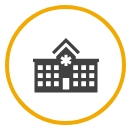
Facility level
Stage Of Notification

Treatment initiation
Level Of Access And Use Of TB Notification Data

Facility level
Private Sector Notification
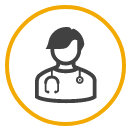
Aggregate data reporting with the public facilities (data submitted manually)
Frequency of digitization of TB notification

Monthly
Mode Of Follow-Up With Notified Cases
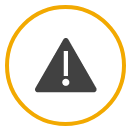
Phone calls, Physical visits
Scale Of Implementation
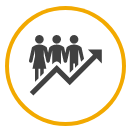
DHIS2 aggregated system is scaled at National level, (DHIS2 tracker pilot – 3 provinces)
Contact Tracing For TB Notified Cases
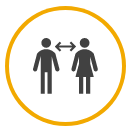
Component of the screen tool (DHIS2 based), but yet to be implemented)
Multi-Channel Enablement

Web based data entry
Govt. order for mandatory TB notification

Yes
PRIVATE SECTOR NOTIFICATION

Nearly 100% of the private clinics are formally engaged with NTP, and contribute to about 18% of the total identified TB cases. The private sector notification is in the form of aggregate data that is either added in DHIS2 along with the data from some tagged public facility, or otherwise directly entered by the private institution (few formally engaged PPMs have access to DHIS2).
COUNTRY IT CAPACITY
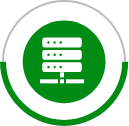
Country Server
DHIS2 platform is shared by other health programs too, and server is maintained centrally by the Department of Information and Systems, Ministry of Health

Interoperability
Data export and APIs are available for integration with other systems. Linking GeneXpert is being explored
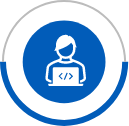
Country IT team
While small changes are managed internally, Saudigitus (HISP Mozambique) team supports MoH for major system enhancements
CURRENT RESOURCES AVAILABLE
Software development and upgradation of DHIS2 is the responsibility of the Department of Information and Systems (DIS) team of the MoH, and all related support is arranged from the MoH directly.
USD 0.17 million is available from a Global Fund grant, for covering the training costs for national level implementation of the case-based TB notification system.
Annually, USD 70,000 is allocated by MoH for handling the day-to-day internet costs for keeping the system functioning.

MILESTONES ACHIEVED AND ROAD MAP
2016
DHIS2 aggregate platform (SIS MA) implemented for facility level aggregate reporting
2012
Data entry in eTB manager scaled to 30 sites
2017
Case based data reporting system development, and training of District units and Provincial supervisors
2018
Distribution of android tablets to Facilities and District level supervisors for case-based data reporting pilot
2019
Refresher training of District & Provincial Supervisors and Data Managers
2020
Online training of District level staff for pilot provinces
2021
Pilot implementation of DHIS2 tracker data entry system in 3 pilot provinces, updation of back log data (2018-20), M&E of implementation and System updation
2022
Scale up of casebased data entry system, Procurement of additional devices

OTHER COMPLEMENTING DIGITAL TOOLS
| Purpose | Tools | Channel | Developed By | Supported By | Scale |
|---|---|---|---|---|---|
| Digital Adherence | Module in SIS TB case based reporting tool | Web application | Saudigitus | The Global Fund | Pilot |
| Logistic Management System | Ferramenta Central | Web Application | CMAM (Central da Medicamentos e Artogos Medicos) | Information not available | Being planned for covering TB services soon |
| Laboratory Information Management | GxAlert(Aspect) | Web Application | SystemOne | The Global Fund | National |
| DisaLink | Web Application | Laboratory System Technologies (Pty) Ltd. | PEPFAR | Implemented at Reference Labs | |
| Community Led Monitoring (CLM) | OneImpact | Mobile App | Dure Technologies | The Global Fund | Pilot project (extension of ADPP initiative) |
| Contact Tracing | DHIS2 Community Screening tool | Web Application | University of Oslo | The Global Fund, USAID | Yet to be implemented |



KEY CHALLENGES

Shortage of trained manpower and high turnover rate at the data entry points makes it different to plan a transition to case based reporting.

Unreliable internet connectivity is a major bottleneck for the country in transitioning ahead from their current aggregate system.

With DHIS2 being owned by the DIS unit at MoH, any changes/ customizations in forms are to be routed through the MoH, which causes significant delays.

Even at the facility level, a heavy reliance exists on the aggregate data. Even at the sites with DHIS2 tracker pilot, the produced case-based data is not used frequently, which makes the transition more difficult.

NTP has a limited in-house capacity to handle DHIS2 customization, and thus, currently the maintenance is outsourced, which increases the budget constrains being faced for case-based system implementation.

Procurement of hardware and training conduction is a well identified impediment for moving towards a case-based data entry from across the country, which makes the plans heavily dependent on external funding.

Integration with other software platforms like GeneXpert can make the processes sustainable, but the country is subject to budget constrains to work towards it.
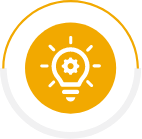
NTP VISION
- ❖ Expansion of case-based system nationwide and complete transition from aggregate to case-based data collection.
- ❖ Real time data availability for effective decision making and program monitoring.
- ❖ Improvement in data quality and incorporation of the entire cascade of TB care & contact screening.
- ❖ Development and implementation of community led monitoring tools.
- ❖ Building internal capacity for system management and finding ways to sustain training of users.
- ❖ Extending the use of DHIS2 to other implementing partners.

RESOURCES NEED
Based on multi-stakeholder discussions, country feedbacks and recommendations for full-filling country’s vision, we have put together an estimated investment requirements and areas needing support for provisioning of a comprehensive case based digital TB surveillance system
Hardware and Infrastructure :

Mobile Devices (for data collection): Mozambique has 675 facilities and to provision mobile device for every facility for case-based TB surveillance, USD 101,250 will be needed assuming USD 150 per mobile devices.

Tablet (for data use): Mozambique has 161 districts and 11 provinces and to promote active data use, each district and province should be given a tablet which would cost roughly around USD 34,400 assuming USD 200 per Tablet devices.

Internet: In case WiFi is not available in each facility, then mobile internet cost of around USD 254,100 should be considered (assuming USD 100 mobile data cost for the entire year per facility, district and regional user).

Server: Based on the current volumes of new cases, Mozambique would need an investment of USD 24,000- 30,000 for next 3 years for server and server maintenance.
Note: Existing devices available through other health programs can be leveraged. In that case, the above-mentioned costing can be accordingly considered.
Software Development :

Based on various multi-stakeholder meetings and given the fact Indonesia already have a strong foundation of DHIS2 aggregated system for TB, around USD 500,000- 1,000,000 should be budgeted for a comprehensive TB surveillance system and analytical dashboard for data use.
Capacity Building and Implementation :

After the software development, a dedicated pool of technical resources will be needed to support platform administration, data management and support. A team of 4-6 skilled resources attributing to a cost of around USD 48,000-72,000 per annum should be budgeted (or USD 144,000-216,000 for 3 years assuming USD 1,000 per month per resources). Additionally, reskilling of the current IT team should be budgeted.

Training: This would involve training material development and onsite and remote training of the trainers. Training sessions should be planned for each of the 495 districts, which could cost roughly USD 100 per district, amounting to USD 16,100. Also, a dedicated trainer should be budgeted in case there is none. E-training options with necessary modules also need to be considered.
TOTAL investment of around USD 1.5 – 2.0 million for 3 years years will be needed on developing a comprehensive case- based digital TB surveillance system for Mozambique.
Disclaimer: The above budget is a function of number of facilities, districts and regions and expected volume of data. This only provides a ballpark figure of what is needed in terms of budget.

The implementation of a surveillance system is very useful for the Program as it allows active monitoring of the disease and behavior over time. With the introduction of patient-centered monitoring, it is expected to have greater visibility of patient management actions, which can allow control of all adversities, their frequency to make sure that there is rapid intervention. This will also allow the linkage between interventions on each patient, their contacts, as well as monitoring the implementation of all required and recommended actions.


Mozambique

Dr Ivan Manhiça|Former NTP Manager

Recommendations
Following are some of the key recommendations suggested based on the findings of this assessment of country’s digital ecosystem and infrastructure:

Strategic Costing Plan
As a first step it is important for the country to create a comprehensive costed action plan for development, implementation and scale up of the TB case based surveillance system.
Based on NTP’s vision and the recommendations for improvements, the plan should clearly define targets with actionable interventions and funding requirements supported with a detailed work plan along with timelines. The plan will help the country to assess and monitor the progress to ensure that any risks can be duly mitigated.
Tentative timeline: Month 0-1

Implementation and scale up of Case Based Notification systems
The NTP has already established DHIS2 environment which has the core infrastructure in terms of database and deployment. It has even secured a decent technical support through the DHIS2 expertise from their partners, which acts as a strong foundation for executing the vision of implementing a comprehensive and integrated real-time case-based TB surveillance and notification system.
It is recommended that this existing capacity is leveraged for expanding the DHIS2 tracker app implementation. While the current tracker development (being piloted) has been planned to cover details of case-based notification system for both DS TB and DR TB patients , the application should also include monitoring of entire continuum of care including presumptive screening, referral, treatment initiation, treatment adherence, treatment outcome and contact tracing in real-time.
The solution architecture should support adding all the above components in phases supported with versioning to ensure seamless upgrades and continuity.
Some of the existing templates already built on DHIS2 tracker systems currently being used by other countries such as WHO’s prevent TB tool or other DHIS2 tracker-based systems can be explored for fast-tracking the software development processes. [6]
Tentative timeline: Month 0-12

Mobile app
One of the challenges reported by the NTP during the assessment is the lack of availability of real time data for stakeholders and inadequate availability of laptops/ desktops. One effective way to overcome this is to support the current data collection processes by introducing a mobile application, which is in line with the country’s efforts of improving the overall digital ecosystem.
As a recommendation, the latest DHIS2 mobile app version which has additional features on data collection, security ,offline data collection, encryption ,version management etc should be extended for use even for aggregate data reporting, specially from facilities with limited IT infrastructure should be reviewed.
This would also ensure that the data structures are consistent. Also, the app is supported with a configurable set up to support any updates/ changes to the program.
Additionally, the DHIS2 mobile framework uses open-source technologies like Java, Postgres, React and Android, there are easily supported by country IT teams also the standard best practices of mobile development like version management , data encryption etc which make this as more robust solution. [7]
Tentative timeline: Month 6-12

System Integration
One of the challenges highlighted by NTP is the leveraging the data collected from the multiple sources (like GeneXpert) into the main eTB manager system as a central data repository for effective use.
TThe current DHIS2 platform and infrastructure needs to be extended to support integration with external systems like GeneXpert, TruNat, Digital X-Ray outputs, Pill boxes and other adherence tools which help in using the data effectively for the patient care continuum as highlighted by the National program.
Recommended exchange / ETL tools like Talend , Informatica which include these features make the data management task much easier and simultaneously improve data warehousing should be evaluated. [8.1] , [8.2]
The data exchange process should follow and comply with FHIR , GDPR standards for more secured and seamless data exchange supporting standard data taxonomy and meta data management processes.
The DHIS2 platforms architecture is easily compatible with these standard tools and processes making this an effective solution. [9.1] , [9.2]
Tentative timeline: Month 12-18

Data Use
The NSP 2020-2029 clearly emphasizes on the importance and need to improve data use. This can be made possible by making case-based TB data and patient line listing available at the lowest level health functionary involved in TB care
Building on the current DHIS2 visualization module which offers a comprehensive dashboard for reviewing of program and data indicators, additional features of pivot table , event reports which support dimensions , data aggregation reports and individual line lists and with timeline views are extremely useful.
Once a robust data analytics and data use model has been established with the current DHIS2 and other systems then a more advanced analytical dashboard should be designed linked to the new case-based TB surveillance system that is already being planned.
To achieve this, and to strengthen and expand the data visualisation scope and making effective use of data for predictive modelling , data science and for advanced analytics, it is also recommended to use best of the breed tools like Tableau , Power BI, which offer these features. The current DHIS2 platform offers APIs which can connected for these applications and be used as an extended analytical component of the data analysis framework. [10]
The existing data analysis tools being used the MoH, like Zenysis, should also be explored for extending to the tuberculosis datasets.
Tentative timeline: Month 6-18

Capacity building for application maintenance
One of the main challenges highlighted by the NTP is the ongoing maintenance and enhancements of the platform. Since the application requires regular updates and to ensure effective adaptation and scale up the system support team requires trained personnel on DHIS.
Strengthening the NTP team with trained system administrators will help in reducing costs (in seeking technical support) and improving and expediting the planned implementations.
Tentative timeline: Month 0-6

Additional data capturing mechanisms
To make sure that paper based patient records (legacy data) is integrated with the DHIS2 tracker systems, technical solutions like OCR (optical character recognition) can be reviewed.
The DHIS2 platform supports reading from these structures. This would help in data upload of all historical data with less difficulties.
This DHIS2 data transformation API feature also offers creation of standard templates which can be easily mapped with external data collection tools. Apart from this it also supports batch upload of historical data in large volumes to ensure minimum disruption to the live systems.
Tentative timeline: Month 6-12

E-Learning
To address the challenges with periodic training of facility level staff to orient them on using DHIS2 for direct data reporting, the MOH must engage in development of a comprehensive eLearning module for app training.
While DHIS2 offers standard training modules on the application , training tools like Moodle [11] built on standard LMS framework can be reviewed for application rollouts.
Additionally for training and updates on the latest manual of procedure and continued medical education on TB care modules can be developed for TB Health providers, administrators at facility and district level to develop and enhance M&E competencies for ensuring a consistent program oversight, specially for the case-based tracker roll out within the existing applications.
Guide TB platform developed by WHO Philippines is a good example of eLearning module for health staffs involved in TB care.
Tentative timeline: Month 0-3

Data Quality
As part of the standard practice, the application(s) / solutions should follow a set of standard data quality mechanisms or the Data Quality Assurance (DQA) framework which would help in improved data credibility and use.
UIC Code : Having a centralized Unique Patient ID system or leveraging existing national ID supported with an improved search functionality can help drastically reduce the duplication of case-based records.
This should be generated automatically through the new case-based TB surveillance system that is already being planned.
Data access control is one such DQA measure that will regulate user’s access to only relevant metadata. It will involve the principle of least privilege (POLP), i.e., user’s access will be determined based on their role in the project. POLP will define and limit what data they have access to and who has that access.
Tentative timeline: Month 6-18

Community Monitoring Systems
As expressed by the NTP, the national TB notification and surveillance system should explore ready-to-use open source CLM platforms like One Impact.
Tentative timeline: Month 6-12

Patient Tracking System
Tracking lost to follow-up cases and enabling real time notifications for patients is highlighted as one of the main challenges.
Establishing a direct and secured mechanism for engaging with patient has potential for drastic improvements in tracking the lost to follow-up patients. Auto generation of notification and messaging by the system through communication channels like Social Media, IVRS and SMS outbound messages should be explored. Open-source applications like Open MRS can be used for these activities. [12]
Tentative timeline: Month 12-24

Device Procurement
One of the limitations highlighted by NTP is the need to improve the data collection processes at the facility level. To streamline this, procurement, distribution and maintenance of the required data entry equipment like laptops, mobile/tablet devices should be done on an urgent basis. Improving the current infrastructure at the facilities is crucial for a complete transition to digital notification.
Tentative timeline: Month 0-6

Strategic Technical Recommendations
Application Upgrades including Server Augmentation & Infrastructure Upgrades : To make sure that systems implementation and scale up of application is supported well, the key need is to have a long-term strategic plan that would cover the technical and operational objectives.
The strategy recommended would cover the following core areas
✓ Technical Upgrades: Based on the architecture, the upgrade would be done with the database, a middleware system, the operating system or the hardware.
Additionally, the architecture should support the integration layer which would be needed for data exchange with other national / external systems. The technologies that need to be brought in and the areas of inter-connection need special focus.
Recommended data system architecture would include updating the version of the current DHIS2 to 2.34 which offers better features on data management , encryption and exchange standards.
Apart from this version 2.34 also supports compliance to GDPR standards and offers more controlled data encryption practises. [13]
✓ Performance Optimisation & Testing : To support the national scale up and implementation strategies it is very essential to have system(s) and application testing done to enable a reliable platform and which also helps in architecture updates and augmentation.
While core teams from the user community who are involved in the testing learn and automatically get trained, Automated System and Application Testing tools like Selenium and Appium also can be considered. Load Testing tools which helping in data base sizing and planning need to be adapted for effective planning. [14.1] , [14.2]
✓ Application & System Security Audit
To strengthen the current systems framework and ensuring long term sustenance it is important to have regular evaluation of the security of the information and systems by measuring how well it conforms to an established set of criteria.
These would also include developing a framework which should outline policies in line with recommended standard policies like HIPAA [15.1] , [15.2] to cover
• Patient Data Management
• Server & Infra guidelines
Apart from application measures offered by DHIS2 [14.1] , [14.2] for patient data security , hosting solutions offered from Azure also cover these as part of their deployment options which can be considered as part of systems hosting. [16]
ACKNOWLEDGMENT
We thank the National TB and Leprosy Program Manager, Dr Ivan Manhiça and the entire team for participating and engaging in the assessment. We would also like to extend our gratitude to Dr. Tomas Dolce for providing valuable insights into Mozambique’s vision for creating an advanced case-based TB surveillance and notification system.
CONTACT DETAILS
National TB & Leprosy
Programme,
Ministry of Health,
Avenue Eduardo Mondlane, B.P. 264, Maputo,
Mozambique
Telephone : (258 1) 430 970
Email : ivanmca2004@yahoo.com.br
REFERENCES
- TB Data References : https://worldhealthorg.shinyapps.io/tb_profiles/?_inputs_&entity_type=%22country%22&lan=%22EN%22&iso2=%22BD%22.
- TB Data References : http://www.stoptb.org/countries/tbdata.asp.
- TB Data Reference : https://www.usaid.gov/sites/default/files/documents/Mozambique_TBRMFY21_TB_DIAH_Version_Final.pdf.
- Digital Landscape : https://datareportal.com/reports/digital-2021-mozambique.
- Infomovel (Commcare) case study : https://f.hubspotusercontent20.net/hubfs/503070/Case%20Studies/CommCare%20-%20Infomovel%20Case%20Study.pdf?__hstc=240960668.01a208a76f798d2452d0cad8ab532dc8.1628656299728.1628656299728.1628656299728.1&__hssc=240960668.1.1628656299729&__hsfp=1414547400&hsCtaTracking=3b8f3f58-6e7a-4013-ba47-f5dbeca5934a%7C3fe78a5a-1146-445f-9502-eb93ece19d6d
- DHIS2 Meta Data Tools : https://dhis2.org/metadata-package-downloads/#tb
- DHIS2 Mobile App : https://dhis2.org/android/.
- System Integration Tools ( Talend , Informatica ) : https://www.talend.com/index.php , https://www.informatica.com/.
- DHIS 2 API & DHIS2 Data Transformation Services : https://docs.dhis2.org/en/develop/using-the-api/dhis-core-version-235/web-api.html , https://docs.dhis2.org/en/use/user-guides/dhis-core-version-236/maintaining-the-system/importexport-app.html
- DHIS2 Power BI : https://community.dhis2.org/t/dhis2-to-powerbi-connector-is-ready-check-out-the-video-test-it-use-it-and-give-us-feedback/37043
- Application Training Tool : https://moodle.org/
- OPEN MRS : https://openmrs.org/
- Features of DHIS 2.34 : https://dhis2.org/overview/version-234/
- Performance Tools ( Selenium , Appium ) : https://appium.io/, https://www.selenium.dev/
- HIPAA Compliance Framework : https://www.hhs.gov/hipaa/for-professionals/security/laws-regulations/index.html, https://www.hipaajournal.com/considered-phi-hipaa/
- Azure Hosting Services : https://docs.microsoft.com/en-us/azure/compliance/offerings/offering-hipaa-us



